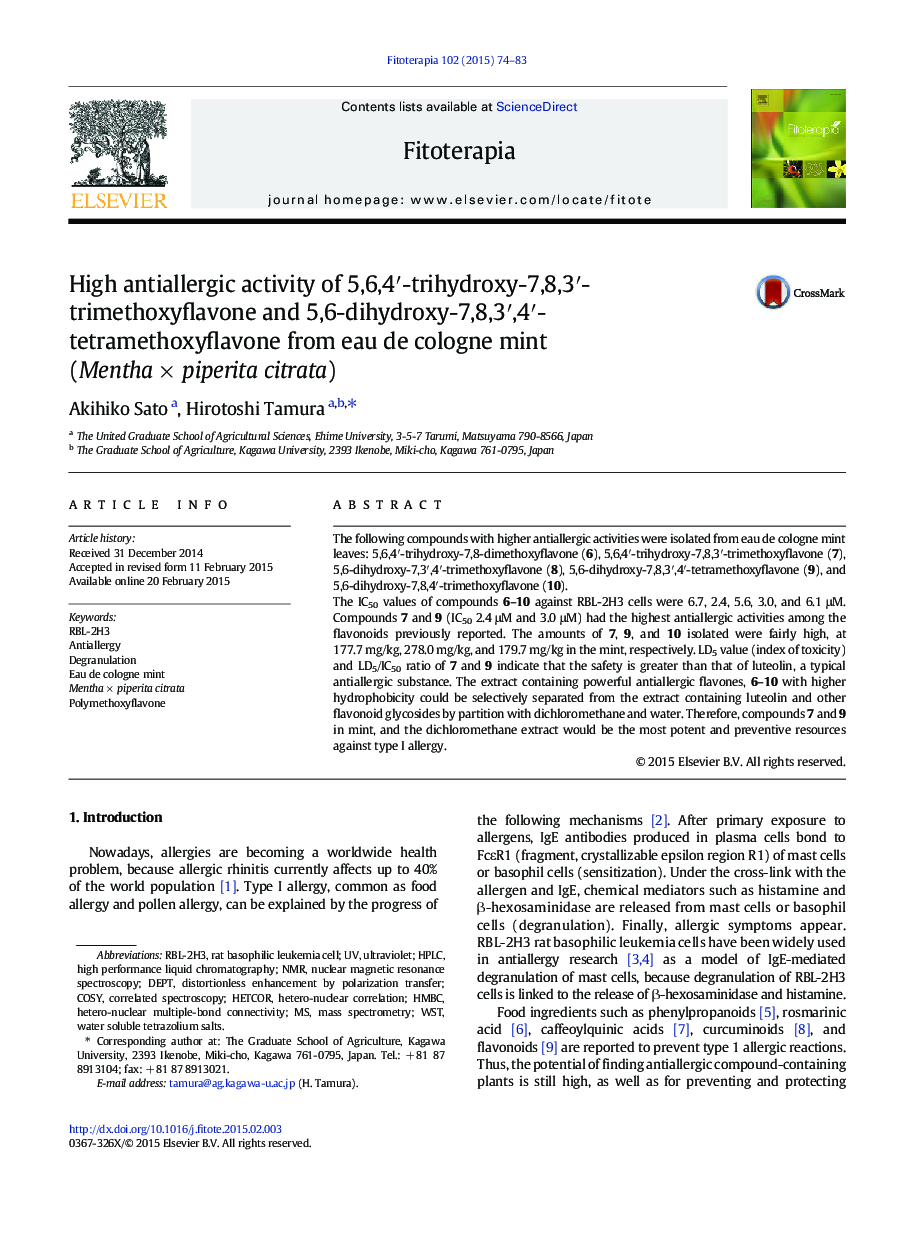| Article ID | Journal | Published Year | Pages | File Type |
|---|---|---|---|---|
| 2538285 | Fitoterapia | 2015 | 10 Pages |
The following compounds with higher antiallergic activities were isolated from eau de cologne mint leaves: 5,6,4′-trihydroxy-7,8-dimethoxyflavone (6), 5,6,4′-trihydroxy-7,8,3′-trimethoxyflavone (7), 5,6-dihydroxy-7,3′,4′-trimethoxyflavone (8), 5,6-dihydroxy-7,8,3′,4′-tetramethoxyflavone (9), and 5,6-dihydroxy-7,8,4′-trimethoxyflavone (10).The IC50 values of compounds 6–10 against RBL-2H3 cells were 6.7, 2.4, 5.6, 3.0, and 6.1 μM. Compounds 7 and 9 (IC50 2.4 μM and 3.0 μM) had the highest antiallergic activities among the flavonoids previously reported. The amounts of 7, 9, and 10 isolated were fairly high, at 177.7 mg/kg, 278.0 mg/kg, and 179.7 mg/kg in the mint, respectively. LD5 value (index of toxicity) and LD5/IC50 ratio of 7 and 9 indicate that the safety is greater than that of luteolin, a typical antiallergic substance. The extract containing powerful antiallergic flavones, 6–10 with higher hydrophobicity could be selectively separated from the extract containing luteolin and other flavonoid glycosides by partition with dichloromethane and water. Therefore, compounds 7 and 9 in mint, and the dichloromethane extract would be the most potent and preventive resources against type I allergy.
Graphical abstractFigure optionsDownload full-size imageDownload high-quality image (381 K)Download as PowerPoint slide
